How to grow a beautiful catalpa in your garden
The slender catalpa attracts attention with its extraordinary beauty. This decorative tree stands out for its large heart-shaped leaves that densely cover its branches, and an abundance of lush inflorescences that emit a life-giving fragrance. Despite its southern origin, this plant is also found in regions with cold winters.
The exotic tree is often used to decorate city parks, but floriculture enthusiasts cultivate it in their personal plots. Catalpa does not cause difficulties in growing, planting is done with seeds, cuttings in open ground or seedlings, and care involves the implementation of basic agrotechnical work.
Short description
Catalpa is a deciduous evergreen tree, the average height of which is 15 m, and the maximum is 45 m. The shape of the crown is spherical, rather dense. The length of the leaves is 30 cm, their width is 17 cm. You can see how this luxurious plant blooms at the beginning of summer. Catalpa inflorescences are large in size, up to 20 cm, are formed in the form of brushes of cream or white color interspersed in the center.
The flowers are funnel-shaped, in each inflorescence there are about 50 pieces, in appearance they are similar to orchids. The pleasant scent lasts for almost a month. For the first time, catalpa begins to bloom at the age of five.
The fruits of the plant are cylindrical in shape, their length is 40 cm, and resemble beans. Inside such a box, from 53 to 146 flattened seeds are placed. It is noteworthy that the fruits on the tree can remain throughout the winter period without losing their varietal qualities.
Catalpa is a fairly hardy tree, its wood is flexible, soft and not subject to decay. The plant perfectly adapts to both low and high temperatures, it can be grown in the northern states of America and in sultry India, Africa and Australia. It is also noted for its high survival rate on the sea coast and in arid steppes.
Of the 10 species of catalp in Russia, only five are grown:
- bignoniform;
- gorgeous;
- Bunge;
- hybrid;
- ovoid.
Interest in this exotic tree is due to the ability of the leaves not to turn yellow even when they fall off (at temperatures below 0 degrees) - their color remains green. In addition, the flowering period of the catalpa falls at a time when the rest of the plantings have already faded.
Reproduction methods
For propagation of this beautiful tree, seed and vegetative methods (cuttings) are used.
Reproduction by seeds:
- Planting material must be collected from well-ripened pods in the fall and stored in a cool, dry place until spring. For these purposes, paper bags or linen bags are well suited. The shelf life of the seed is no longer than two years.
- Before planting, the seeds should be kept in a container with warm water for 10-12 hours. Such a simple technique will significantly increase germination.
- Sowing catalpa seeds is recommended in February-March. If possible, their laying is done in greenhouse structures or in special containers covered with glass or foil.
- In a favorable microclimate (moderate humidity, temperature + 15-25 ° C, good lighting), small sprouts will appear after 3-4 weeks. Covering material, if used, will need to be removed.
- Catalpa shoots should be taken care of until May, and after they can be transplanted to a permanent place in open ground.
Reproduction of catalpa by cuttings:
- Cuttings must be harvested in the second half of summer. The length of the cut shoots should be 10 cm, and the number of buds on them should be from 3 to 4 pieces.
- Before planting catalpa cuttings in fertile soil, they must be treated with a growth stimulator (the product is diluted according to the instructions attached to it).
- The material prepared in this way is planted for rooting in a greenhouse, and relocated to an open area the next year.
Landing technology
It is best to plant catalpa in spring, but planting in autumn is possible if necessary. When choosing a location, it is recommended to give preference to open and sunny areas, well protected from through winds. Otherwise, strong gusts will damage the delicate leaves of the southern tree.
Catalpa is not very demanding on the soil, but for its cultivation it is better to choose soils with neutral acidity and sufficiently drained. Before planting, organic fertilizer or charcoal must be applied to the soil. To fill the container for the initial planting, it is recommended to use a mixture of river sand, peat, black soil and humus, mixed in proportions of 2: 1: 2: 3.
Important! The plant painfully tolerates close proximity to the surface of groundwater, so it is advisable to choose areas with moderate humidity.
Planting procedure:
- Dig a hole, 1 m deep, 70 cm wide. The size of the hole should fully correspond to the size of the root system of the young tree. The distance between future bushes should be 3-5 m, depending on the variety.
- At the bottom, the first layer is a drainage of fine gravel, brick battle or expanded clay.
- Then you should pour a mixed soil of 5-7 kg of wood ash, 50 g of phosphate rock, organic fertilizer, sand and peat.
- The catalpa seedling must be carefully installed, spread its roots and sprinkled with fertile soil, lightly tamping it. The main thing is that the root collar is above the ground.
- Water the seedling abundantly.
- Mulch the ground in the trunk circle with sawdust.
It is recommended to water the seedlings once every seven days. In the first two to three years, they should be covered for the winter to keep them from freezing. On average, the growth of a young catalpa is 1 m per year.
For planting, you can purchase catalpa seedlings at specialized retail outlets. It is recommended to pay attention to the root system: it must have a healthy appearance. Specimens with mechanical damage on the roots are not worth buying, otherwise the adaptation period will pass very slowly, without any guarantee to get a strong plant.
Care features
It is not difficult to care for a catalpa; increased attention is required only when planting and in the first two to three years. In order for a tree to grow and develop normally, simple work must be done.
Watering
The recommended frequency is once a week, up to 1.5-2 buckets of water should be used per plant. If precipitation has fallen or there is no hot weather, then the number of procedures is reduced to 1 time in two weeks, the main thing is to prevent stagnation of water and waterlogging of the soil. The easiest way to detect a lack of moisture is by the leaves of the tree: they will sag, since they have lost the desired turgor.
Loosening and weeding
When growing catalpa, it is important not to allow the formation of a dry crust on the upper layer of the earth and overgrowing of the near-trunk circle with weeds. Loosening should be done as needed, the processing depth is 30-40 cm. Considering that the catalpa has a rod-shaped root system, the probability of damaging it is very low.
Nutrient input
For catalpa, two seasonal dressings are enough, the first is carried out at the initial stage of the growing season with the help of slurry (5-7 liters per plant), and the second - in the flowering phase, when mineral fertilizer is applied. Top dressing should be carried out only after the soil has been moistened.
Advice! To prepare slurry, it is necessary to dilute the manure with water in a ratio of 1:10.
Preparatory measures before winter
Young catalpa trees (in the first 2-3 years) should be wrapped with spruce branches or burlap to protect them from the harmful effects of negative temperatures, while the trunks should be covered with fallen leaves, the thicker the layer, the better. As the tree develops, its resistance to frost increases. In case of partial frost damage to an adult plant, new shoots will grow in the next season.
Pruning
Sanitary pruning of catalpa should be done every spring. All dried, damaged and deformed shoots are subject to removal. After this procedure, tree growth is activated. The culture quickly recovers, tolerates both sanitary pruning and decorative when its crown is formed.
Diseases and pests
The exotic tree is positioned as highly resistant to all sorts of diseases. It also has good immunity to garden pests. It is very rare for a catalpa to be struck by a Spanish front sight. Karbofos is used as an effective means of combating this insect; it is enough to carry out two or three treatments. If you do not take any measures, then the shoots will suffer from deformation.
In case of infestation with Comstock worms, the tree should be sprayed with an appropriate insecticide before opening the buds.
If in the near-trunk circle of the catalpa there is too dense and dry ground, then there is a high probability of damage to the tree by a fungus of the genus Verticillus, as a result of whose vital activity the plant will soon dry up and die. It can be identified by lethargic and drooping leaves, which begin to lose their green color and turn yellow. The disease can only be overcome at an early stage. For these purposes, fungicides such as "Topsin-M" and "Fundazol" are suitable.
Catalpa is a truly luxurious tree with a pleasant aroma and long flowering time. It is unpretentious to care for, has high frost resistance and is distinguished by sufficient immunity to common diseases. Catalpa can be safely grown in any region, regardless of climatic conditions.
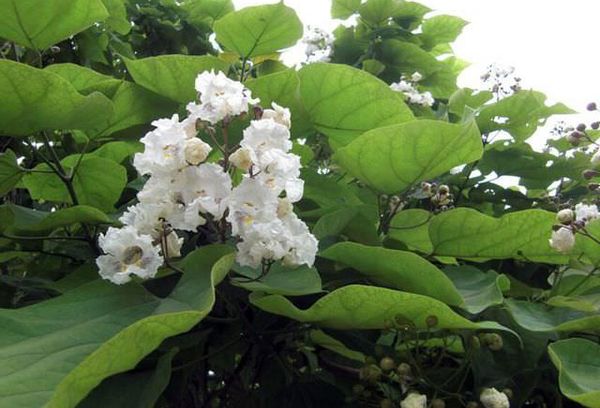
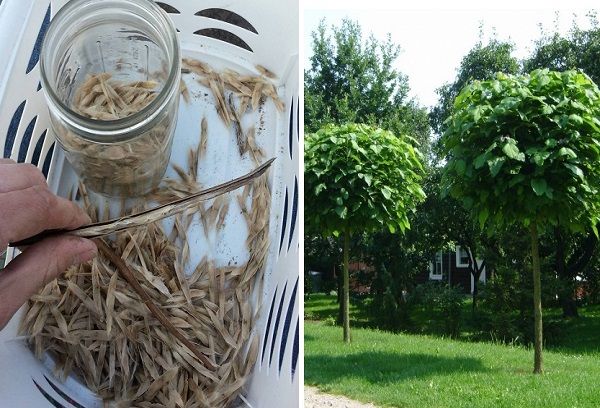

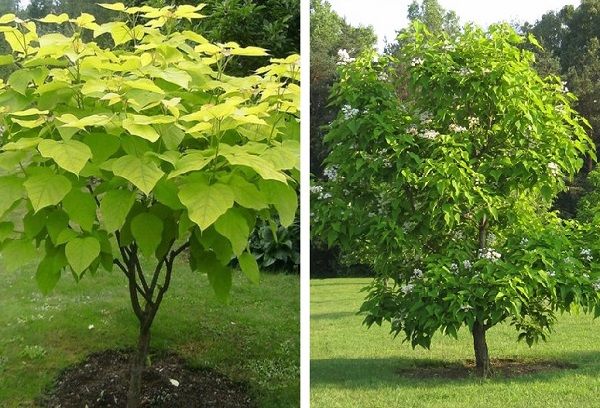

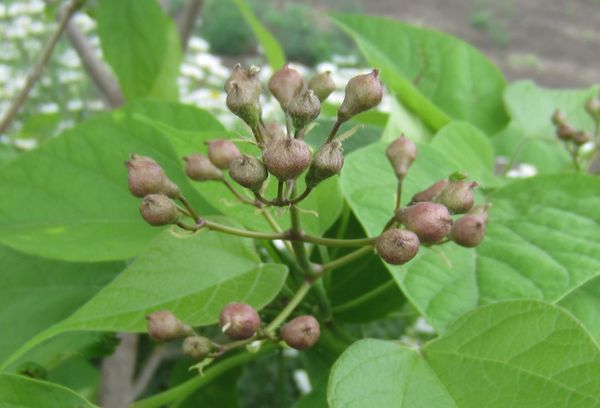
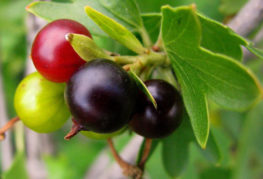
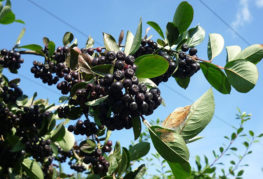
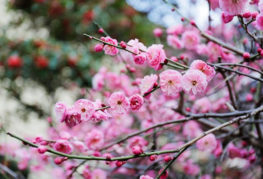
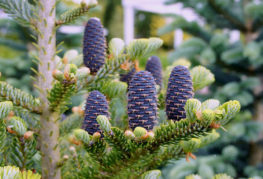
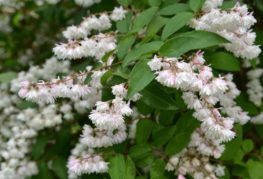
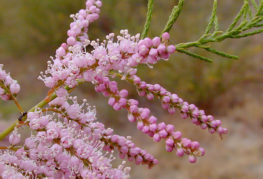
and will be published shortly.